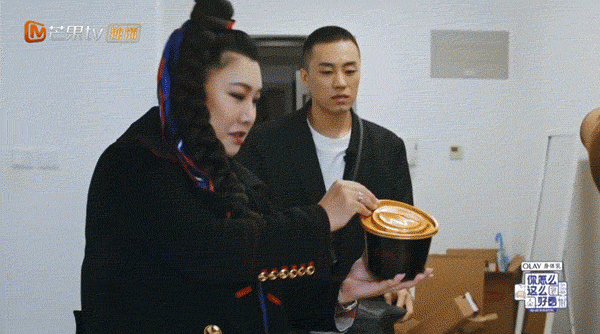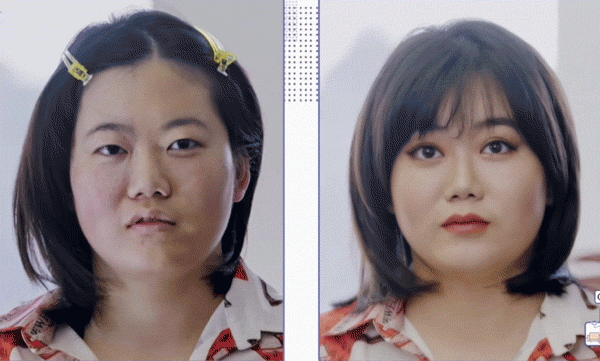
The Empty Consumerism of China’s ‘Queer Eye’ Clone
The core concept of Mango TV’s “You Are So Beautiful,” which premiered on the popular streaming network late last year, is simple. Each week, five fabulous experts band together to give glam makeovers to a revolving door of sartorially challenged sad sacks. They update their clients’ wardrobes and hairstyles, offer them hip lifestyle tips, and redecorate their apartments with chic new furniture. Then they stage a big reveal, and everyone gets together to talk, cry, and hug it all out.
If all this sounds familiar, that’s because it should. Indeed, when I first heard about the show, my initial reaction was: “They’re making a Chinese ‘Queer Eye’?”
I remember watching the original “Queer Eye for the Straight Guy,” which ran on American TV from 2003 to 2007, while in college and being shocked at the idea of a reality show starring sexual minorities. Far fewer eyebrows were raised in 2018, when Netflix successfully rebooted the show as “Queer Eye” with a new cast of experts, a more diverse roster of clients, and a more millennial-friendly look. But given the challenges faced by the LGBT community on the Chinese mainland, I never thought it would get an adaptation here.
Turns out, I was right. I tuned into “You Are So Beautiful” (hereafter referred to as YASB) with high hopes. Four episodes in, I switched it off, feeling both disappointed and provoked. It wasn’t just that the show’s producers had ripped off “Queer Eye,” or even that they had done so while simultaneously scrubbing it of all traces of outward LGBT representation — none of the show’s experts are openly gay — but that YASB had scrapped the fundamentally humanist celebration of diversity in “Queer Eye” for a crude paean to consumerism and upper middle-class cultural privilege.
“Queer Eye” was always a somewhat formulaic show. What made it special wasn’t the before-and-after reveal, which had been done before, but the interplay and empathy between the show’s experts and their client. Gay men were and are a socially marginalized group. By pairing gay experts with clients who themselves struggle with feelings of loneliness, helplessness, and marginalization in their home and work lives, the two sides could find common ground and emotionally relate to one another.
There’s a reason why Netflix’s reboot has so successfully moved audiences, even to the point of tears. “Queer Eye’s” experts understand the issues their clients face, and their makeover efforts don’t feel like a forced intervention, but an offer to help.
YASB’s makeovers play out very differently. The show’s star cast consists of three women and two men, including a model, an actress, a television host, a fashion editor, and an interior designer. They’re all famous celebrities or influencers, and if any identify as LGBT, they haven’t come out yet. Meanwhile, in the four episodes I watched, the show’s clients — all of them women — consisted of classic tropes like the unmarried 30-something with a Ph.D., the harried housewife, the overworked office drone, and the experienced physician. They are middle-class women with diverse interests — more diverse, certainly, than the show’s cast.
Yet each episode invariably begins with the show’s five experts barging into their client’s life and loudly and animatedly expressing their dismay at everything they see. I don’t know what the producers were going for, but it comes off as classist and affected. It’s hard not to feel uncomfortable watching these wealthy, influential people express shock and bewilderment at their clients’ simple homes, lifestyles, or entry-level jobs.

This tonal shift ultimately changes the show’s message. On “Queer Eye,” the makeovers are based on their clients’ needs and meant to enhance lives — not fundamentally alter them. The process is grounded in the experts’ identification and emotional connection with their subject, and thus feels natural, humane, and minimally invasive. The theme is consistent: There’s nothing wrong with you, but maybe you could be better.
YASB’s experts, on the other hand, view everything through the prism of their own constructed bourgeois celebrity. First the experts badger their client into submission, then go about reconstructing their life. What they do barely qualifies as a makeover: They basically bombard their clients with symbols of consumerism until there’s nothing else left standing. The takeaway is quite different: You’re no good, and you’re doing things wrong.
In the process, YASB comes across as being out of touch. Take the third episode, for example. In one scene, one of the show’s experts sits with that week’s client. Together, they laugh at the white-collar worker’s belly, her fondness for calorie-packed comfort food, and her inept use of selfie filters. Then the expert helps her set a healthy eating plan and updates her makeup kit.

The underlying idea behind this sort of makeover is clear: “You can be penniless, but you can’t slack off — you have to learn to live well.” But this is deceptive. “Living well” requires money and time, two things that are out of reach for millions of overworked and exhausted office workers.
China has undergone a profound social and economic transformation over the past 40 years, but even among those who have gained the most, the effects have been uneven. In recent years, the consumption habits of wealthy Chinese have increasingly been repackaged by fashion outlets, the entertainment industry, and social media influencers as the pinnacle of “healthy,” “mainstream,” and “high-level” living. These new cultural brokers clumsily seek to transform white-collar workers and other members of China’s lower middle class by inculcating them with upper middle-class and elite lifestyle standards and ideals.
YASB is hardly the only makeover show to tout the benefits of consumerism by papering over the class divide. But the designs of these upper middle-class social engineers don’t always align with the real needs of their clients, which are rarely caused by slovenliness or poor taste. When one home makeover show renovated an old, falling-apart, but still beautiful three-story stone home in Shanghai, the show’s team installed a dumbwaiter to simplify moving food up the stairs. But when the production team later visited the family, they realized that the dumbwaiter, thought to be a convenience, had been repurposed as a trash dump.
For those that buy into the narrative these shows sell — or for fans of their celebrity and influencer stars and their luxurious lifestyles — these messages resonate. The shows claim it’s still possible for those on the wrong side of the class divide to replicate and reconstruct what they’ve come to see as the ultimate social ideal. Upward mobility isn’t just a matter of money, you see: It’s also about overcoming material limits and dressing, living, and thinking for success.
Chinese media has spent the past few years in a race to the bottom in the hopes of capturing advertising dollars. Yet in terms of content, producers remain hyper-focused on catering to and propagating upper middle-class values and lifestyles. Perhaps such programming can satisfy viewers’ aspirational impulses. However, it’s also gradually costing us our ability to imagine and sympathize with different and diverse ways of being.
Translator: Kilian O’Donnell; editors: Wu Haiyun and Kilian O’Donnell; portrait artist: Zhang Zeqin.
(Header image: “You Are So Beautiful” cast members use a special adhesive tape on a subject’s face to make it appear more narrow. From @你怎么这么好看官微 on Weibo)










